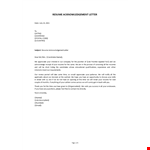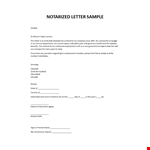A notarized authorization letter is a legally binding document that grants someone the authority to act on your behalf. Whether it's for personal, travel, or any other purpose, having a notarized letter can provide peace of mind and ensure that your instructions are followed.
To get a notarized letter, follow these simple steps:
- Gather the relevant information: Include details such as your name, the recipient's name, the specific actions they're authorized to take, and any necessary dates.
- Compose the letter: Write a concise and clear letter that clearly states your authorization and intent.
- Visit a notary public: Locate a trusted notary public in your area and schedule an appointment. Bring the letter, valid identification, and any other necessary documents.
- Sign the letter in front of the notary: The notary will witness your signature and validate the document by affixing their stamp or seal.
- Keep a copy for your records: It's important to retain a copy of the notarized letter for safekeeping and future reference.
When it comes to travel with a child, requirements may vary. In some cases, you may need a notarized letter from the child's other parent or legal guardian, granting permission to travel. It's recommended to check with relevant authorities or consult a legal professional to ensure compliance with specific regulations.
For your convenience, sam.gov provides a notarized letter template that you can customize to suit your specific needs. It's always a good idea to review and adapt the template according to your circumstances before getting it notarized.
The cost of getting a notarized letter may vary depending on several factors, including the notary public's fee structure and any additional services required. It's advisable to inquire about the cost upfront during the scheduling or consultation process.


